Evaluation of the Transverse Crack Depth of Rail Bottoms Based on the Ultrasonic Guided Waves of Piezoelectric Sensor Arrays
Abstract
:1. Introduction
2. Materials and Methods
2.1. UGW Theory
2.2. Selection of the Excitation Frequency
2.3. Design of Piezoelectric Sensor Array
2.4. Principle of a BP Neural Network
2.5. Evaluation Metrics for Model Performance
3. Experiments and Systems
3.1. The Experimental System
3.2. Experiment
4. Feature Definition and Extraction
5. Evaluation Model Based on Multi-Path Reconstruction
6. Conclusions
7. Future Work
Author Contributions
Funding
Institutional Review Board Statement
Informed Consent Statement
Data Availability Statement
Conflicts of Interest
References
- Ge, H.; Chua Kim Huat, D.; Koh, C.G.; Dai, G.; Yu, Y. Guided wave–based rail flaw detection technologies: State-of-the-art review. Struct. Health Monit. 2022, 21, 1287–1308. [Google Scholar] [CrossRef]
- Office of Railroad Safety, Federal Railroad Administration. Track Inspector Rail Defect Reference Manual; FRA Report; Federal Railroad Administration: Washington, DC, USA, 2011.
- Stefano, M. Non-Contact Ultrasonic Guided Wave Inspection of Rails: Next Generation Approach. Ph.D. Thesis, University of California, San Diego, CA, USA, 2015. [Google Scholar] [CrossRef]
- Office of Safety Analysis, Federal Railroad Administration. Available online: http://safetydata.fra.dot.gov/officeofsafety/default.aspx (accessed on 15 June 2022).
- Rail Accident Investigation Branch. Class Investigation into Rail Breaks on the East Coast Main Line. Rail Accident Report 24/2014. Available online: https://www.gov.uk/raib-reports/test-contentclassinvestigation-into-rail-breaks-on-the-east-coast-main-line (accessed on 15 June 2022).
- Enshaeian, A.; Rizzo, P. Stability of continuous welded rails: A state-of-the-art review of structural modeling and nondestructive evaluation. Proc. Inst. Mech. Eng. Part F J. Rail Rapid Transit 2021, 235, 1291–1311. [Google Scholar] [CrossRef]
- Jia, Y.; Lu, Y.; Xiong, L.; Zhang, Y.; Wang, P.; Zhou, H. A Filtering Method for Suppressing the Lift-Off Interference in Magnetic Flux Leakage Detection of Rail Head Surface Defect. Appl. Sci. 2022, 12, 1740. [Google Scholar] [CrossRef]
- Gao, Y.; Tian, G.Y.; Li, K.; Ji, J.; Wang, P.; Wang, H. Multiple cracks detection and visualization using magnetic flux leakage and eddy current pulsed thermography. Sens. Actuators A Phys. 2015, 234, 269–281. [Google Scholar] [CrossRef]
- Ng, K.; Ghafoor, I.; Tse, P. A novel laser-based duffing oscillator system to identify weak ultrasonic guided wave signals related to rail defects. Opt. Lasers Eng. 2022, 157, 107111. [Google Scholar] [CrossRef]
- Yan, L.; Gao, C.; Zhao, B.; Ma, X.; Zhuang, N.; Duan, H. Non-destructive imaging of standard cracks of railway by photoacoustic piezoelectric technology. Int. J. Thermophys. 2012, 33, 2001–2005. [Google Scholar] [CrossRef]
- Tian, G.Y.; Gao, Y.; Li, K.; Wang, Y.; Gao, B.; He, Y. Eddy current pulsed thermography with different excitation configurations for metallic material and defect characterization. Sensors 2016, 16, 843. [Google Scholar] [CrossRef]
- Rose, J.L.; Avioli, M.J.; Mudge, P.; Sanderson, R. Guided wave inspection potential of defects in rail. Ndt E Int. 2004, 37, 153–161. [Google Scholar] [CrossRef]
- Jia, W. Experiment into nondestructive testing of rail foot Cracks using infrared thermal waves. Infrared Technol. 2020, 42, 163–167. [Google Scholar] [CrossRef]
- Pathak, M.; Alahakoon, S.; Spiryagin, M.; Cole, C. Rail foot flaw detection based on a laser induced ultrasonic guided wave method. Measurement 2019, 148, 106922. [Google Scholar] [CrossRef]
- Hu, S.; Shi, W.; Lu, C.; Chen, Y.; Chen, G.; Shen, G. Rapid detection of cracks in the rail foot by ultrasonic b-scan imaging using a shear horizontal guided wave electromagnetic acoustic transducer. Ndt E Int. 2021, 120, 102437. [Google Scholar] [CrossRef]
- Su, Z.; Ye, L. Identification of Damage Using Lamb Waves: From Fundamentals to Applications; Springer Science & Business Media: Berlin/Heidelberg, Germany, 2009. [Google Scholar] [CrossRef]
- Xing, B.; Yu, Z.; Xu, X.; Zhu, L.; Shi, H. Research on a rail defect location method based on a single mode extraction algorithm. Appl. Sci. 2019, 9, 1107. [Google Scholar] [CrossRef]
- Moustakidis, S.; Kappatos, V.; Karlsson, P.; Selcuk, C.; Gan, T.H.; Hrissagis, K. An intelligent methodology for railways monitoring using ultrasonic guided waves. J. Nondestruct. Eval. 2014, 33, 694–710. [Google Scholar] [CrossRef]
- Deng, F.; Li, S.Q.; Zhang, X.R.; Zhao, L.; Huang, J.B.; Zhou, C. An Intelligence Method for Recognizing Multiple Defects in Rail. Sensors 2021, 21, 8108. [Google Scholar] [CrossRef]
- Hu, P.; Wang, H.; Tian, G.; Liu, Y.; Li, X.; Spencer, B.F. Multifunctional flexible sensor array-based damage monitoring for switch rail using passive and active sensing. Smart Mater. Struct. 2020, 29, 095013. [Google Scholar] [CrossRef]
- Hayashi, T.; Tamayama, C.; Murase, M. Wave structure analysis of guided waves in a bar with an arbitrary cross-section. Ultrasonics 2006, 44, 17–24. [Google Scholar] [CrossRef]
- Lamb, H. On waves in an elastic plate. Proc. R. Soc. Lond. Ser. A Contain. Pap. A Math. Phys. Character 1917, 93, 114–128. [Google Scholar] [CrossRef]
- Rose, J.L. Ultrasonic Guided Waves in Solid Media; Cambridge University Press: Cambridge, UK, 2014. [Google Scholar] [CrossRef]
- Othmani, C.; Zhang, H.; Lu, C. Effects of initial stresses on guided wave propagation in multilayered PZT-4/PZT-5A composites: A polynomial expansion approach. Appl. Math. Model. 2020, 78, 148–168. [Google Scholar] [CrossRef]
- Yang, B.; Xuan, F.Z.; Chen, S.; Zhou, S.; Gao, Y.; Xiao, B. Damage localization and identification in WGF/epoxy composite laminates by using Lamb waves: Experiment and simulation. Compos. Struct. 2017, 165, 138–147. [Google Scholar] [CrossRef]
- Leckey, C.A.C.; Wheeler, K.R.; Hafiychuk, V.N.; Hafiychuk, H.; Timucin, D.A. Simulation of guided-wave ultrasound propagation in composite laminates: Benchmark comparisons of numerical codes and experiment. Ultrasonics 2017, 187–200. [Google Scholar] [CrossRef]
- Yan, S.; Li, Y.; Zhang, S.; Song, G.; Zhao, P. Pipeline Damage Detection Using Piezoceramic Transducers: Numerical Analyses with Experimental Validation. Sensors 2018, 18, 2106. [Google Scholar] [CrossRef] [PubMed]
- Zhang, J.Y.; Pan, G.Y. Comparison and application of multiple regression and BP neural network prediction model. J. Kunming Univ. Sci. Technol. (Nat. Sci. Ed.) 2013, 38, 61–67. [Google Scholar]
- Chen, S.I. An improved method for learning rate of BP neural network. J. Chang. Teach. Coll. 2010, 29, 25–27. [Google Scholar]
- Wilcox, P.D.; Lowe, M.J.S.; Cawley, P. Mode and transducer selection for long range Lamb wave inspection. J. Intell. Mater. Syst. Struct. 2001, 12, 553–565. [Google Scholar] [CrossRef]
- Shao, Z.; Shi, L.; Cai, J. Wavelet modeling of signals for non-destructive testing of concretes. Meas. Sci. Technol. 2011, 22, 055702. [Google Scholar] [CrossRef]
- Moisen, M.C.; Benitez-Perez, H.; Medina, L. Ultrasonic NDT for flaws characterisation using ARTMAP network and wavelet analysis. Int. J. Mater. Prod. Technol. 2008, 33, 387–403. [Google Scholar] [CrossRef]
- Mallat, S.G. A theory for multiresolution signal decomposition: The wavelet representation. IEEE Trans. Pattern Anal. Mach. Intell. 1989, 11, 674–693. [Google Scholar] [CrossRef] [Green Version]




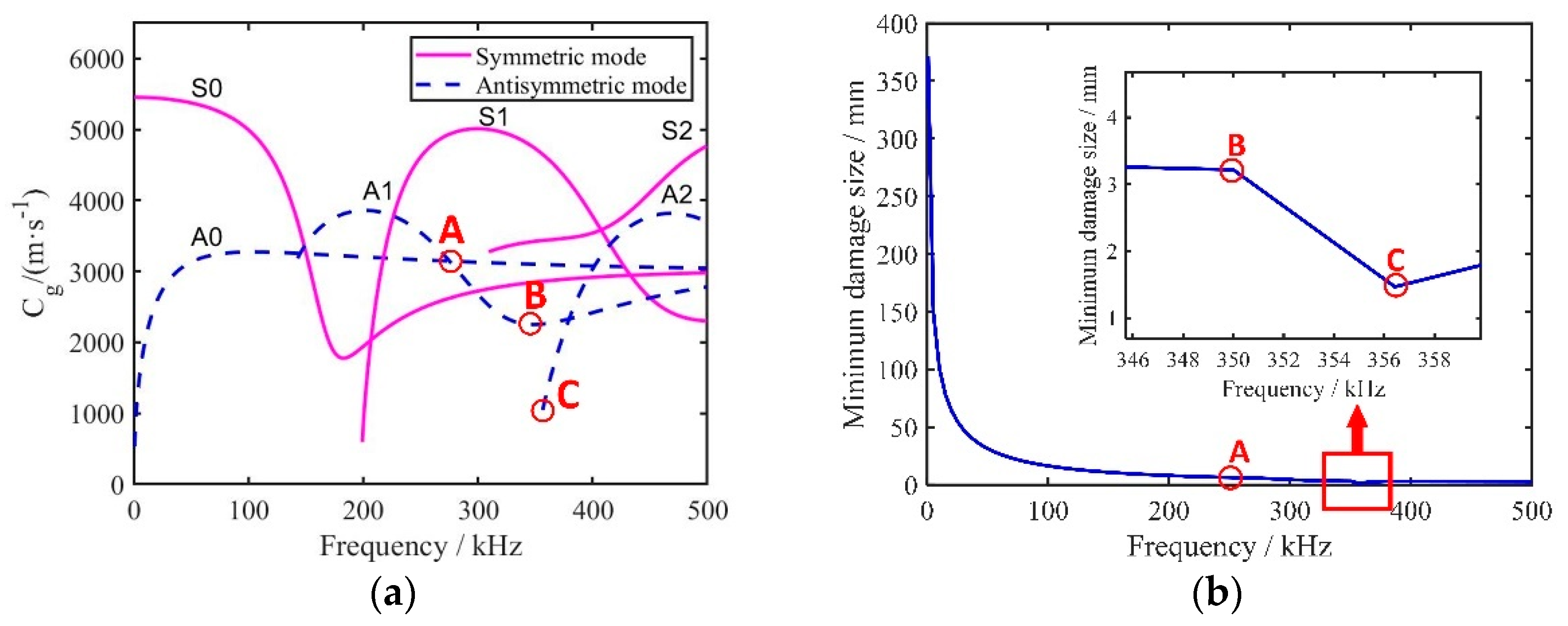
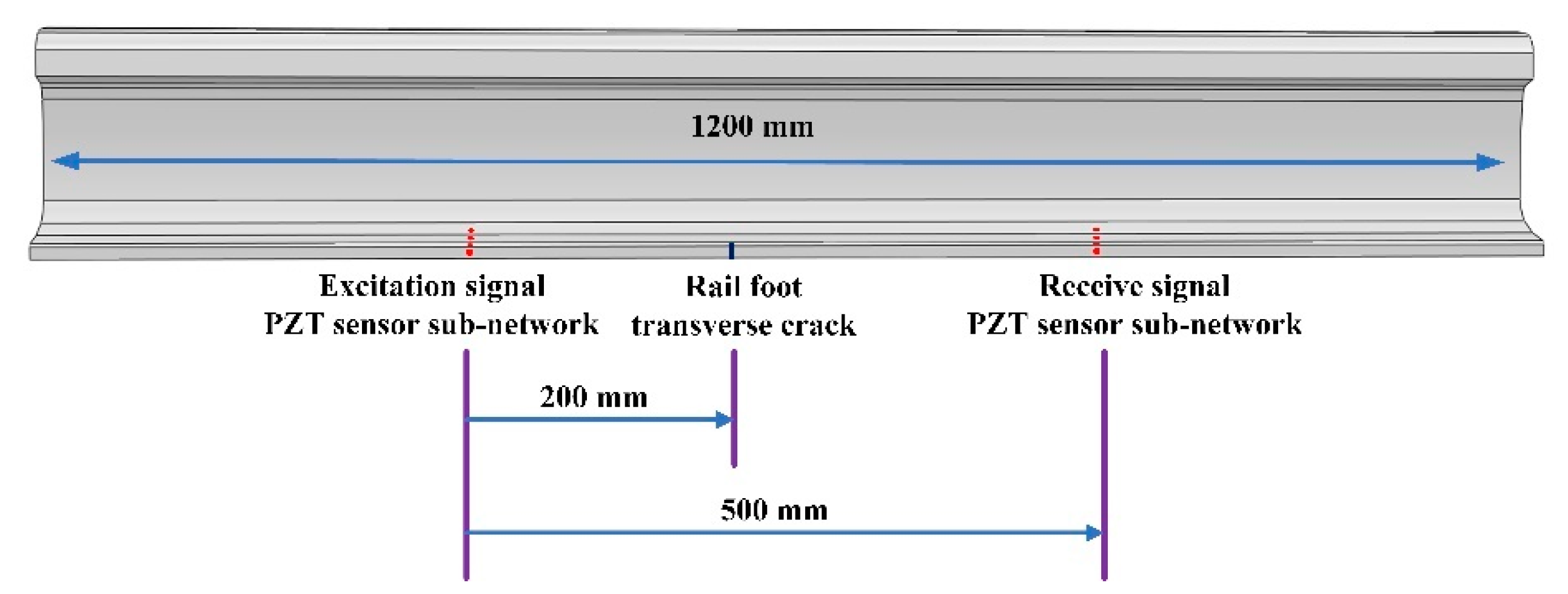

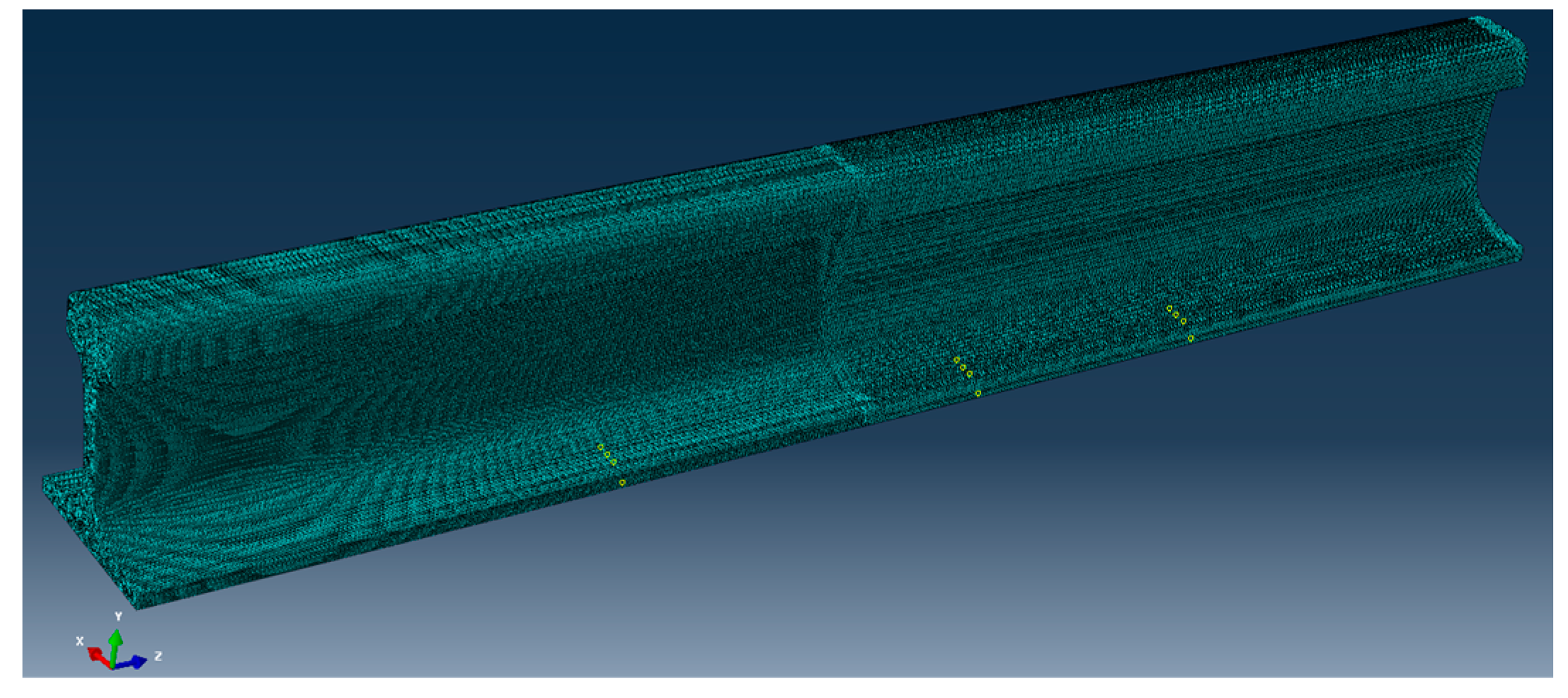

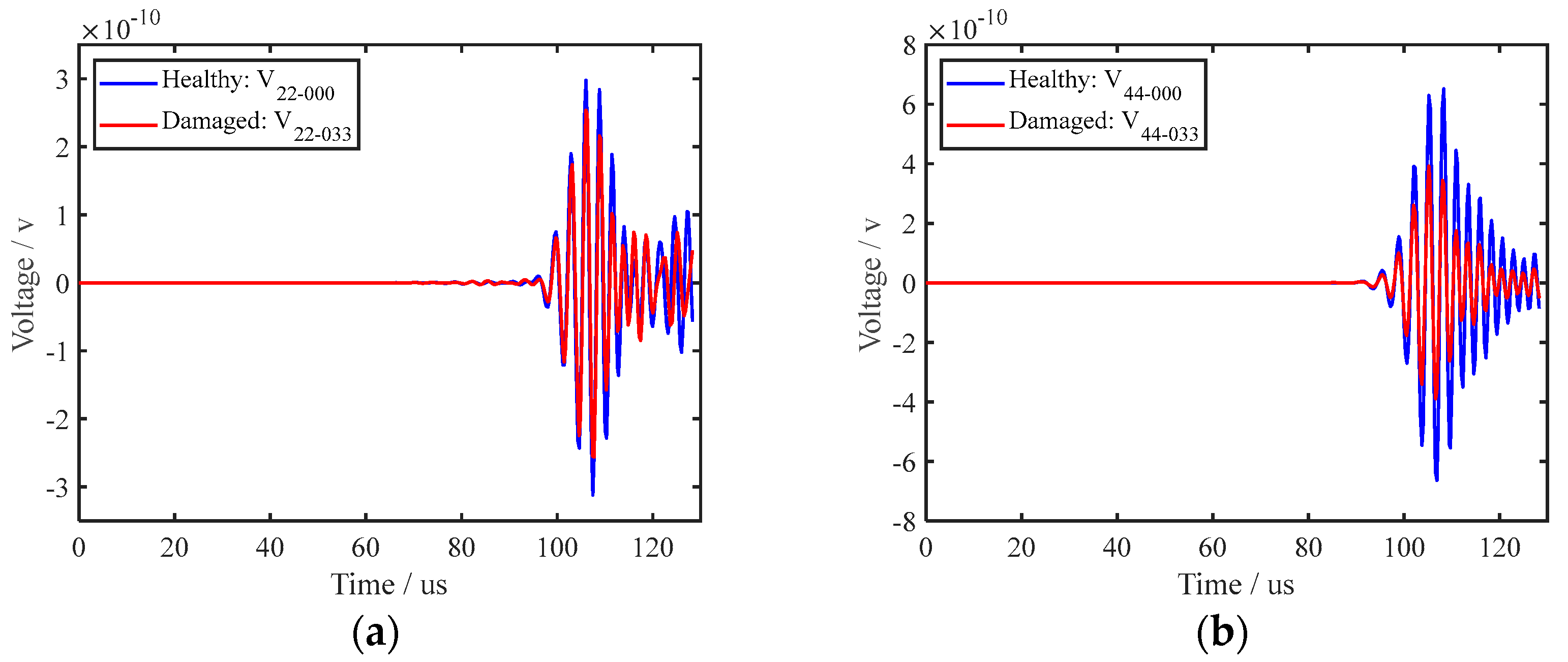
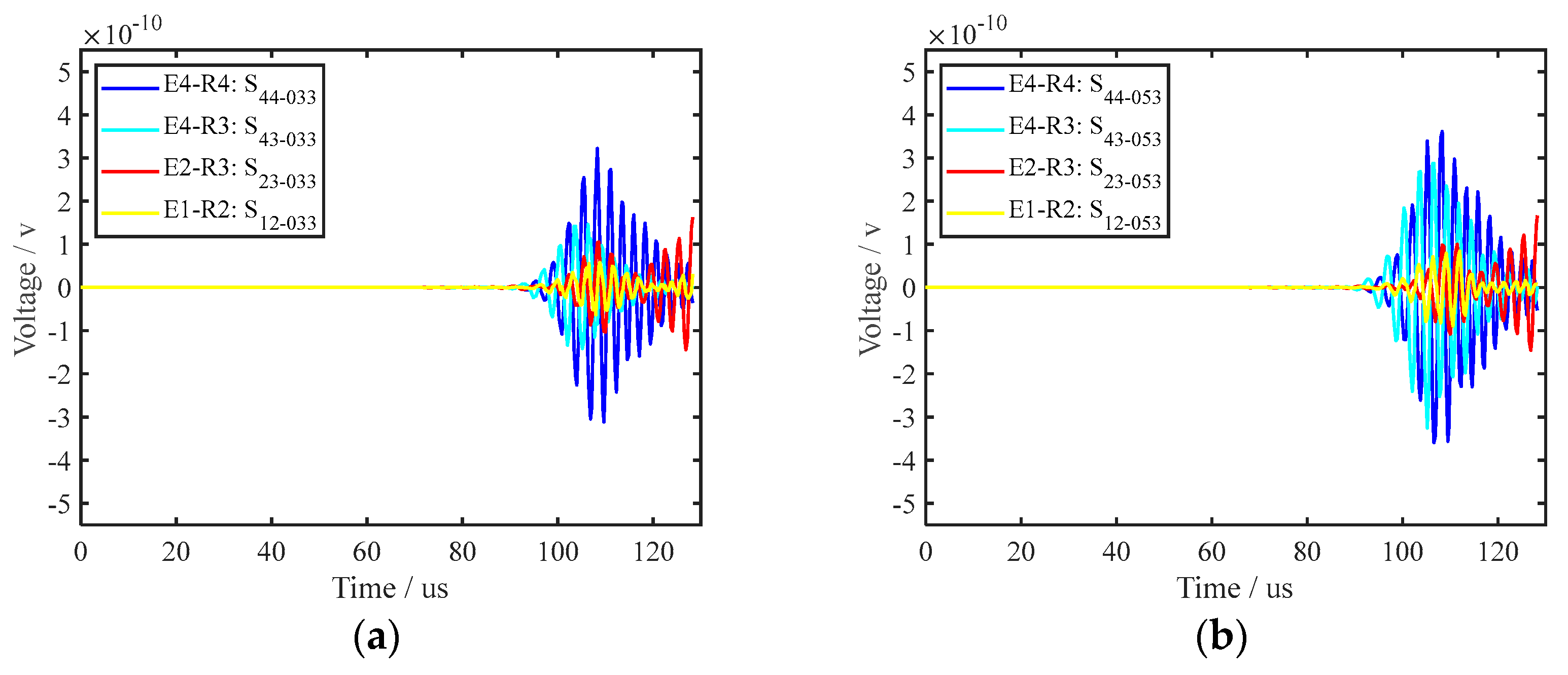



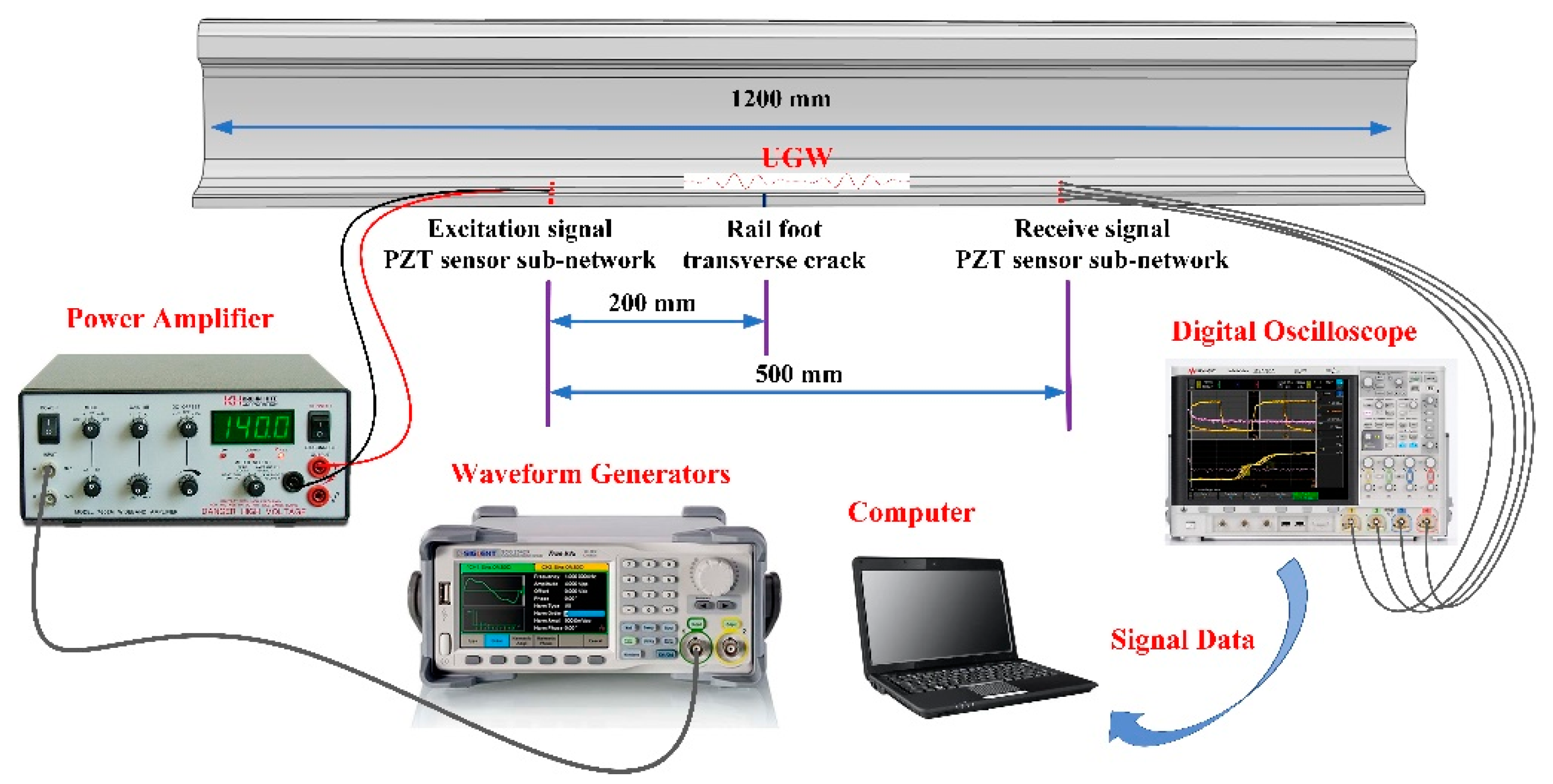


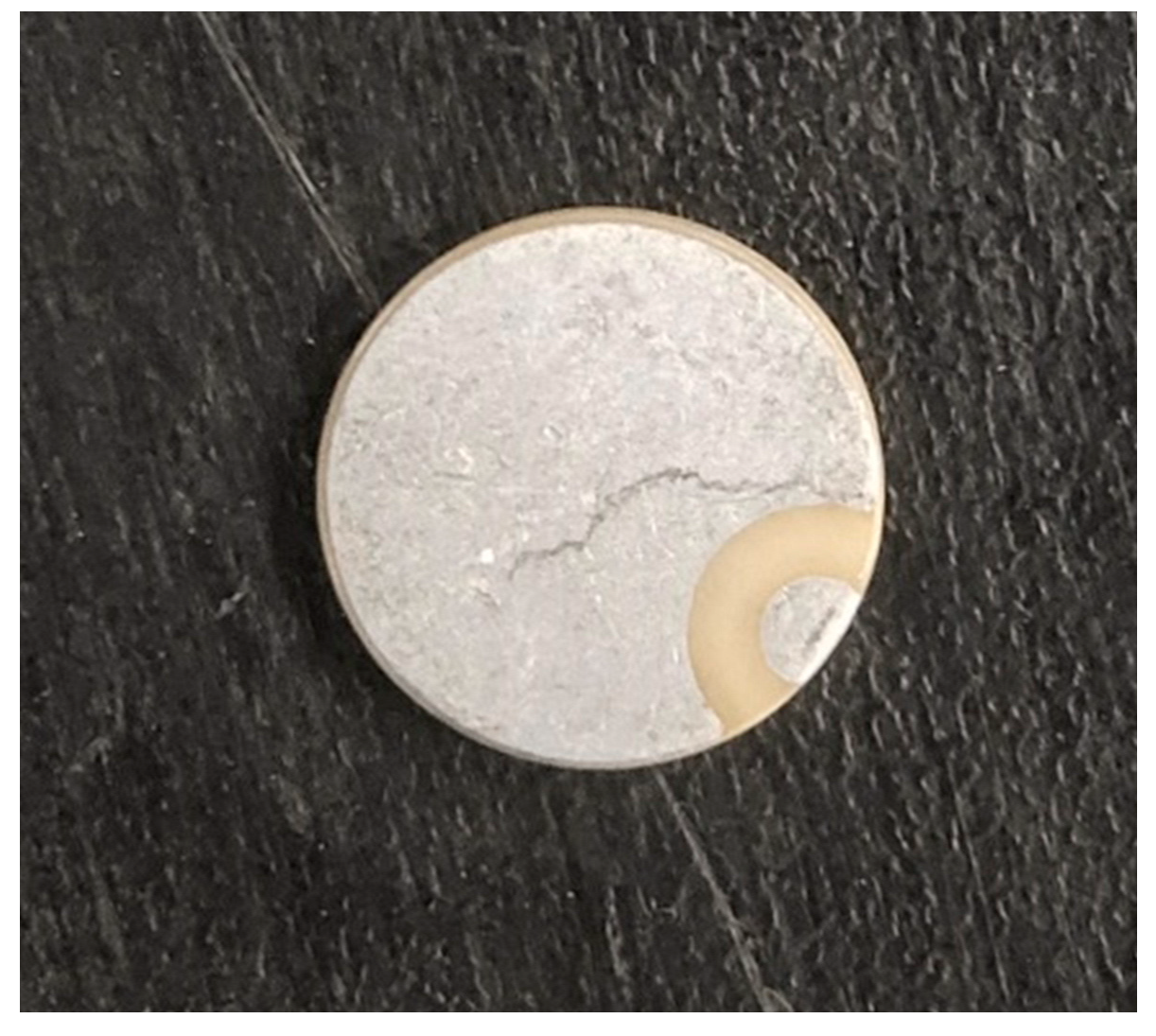

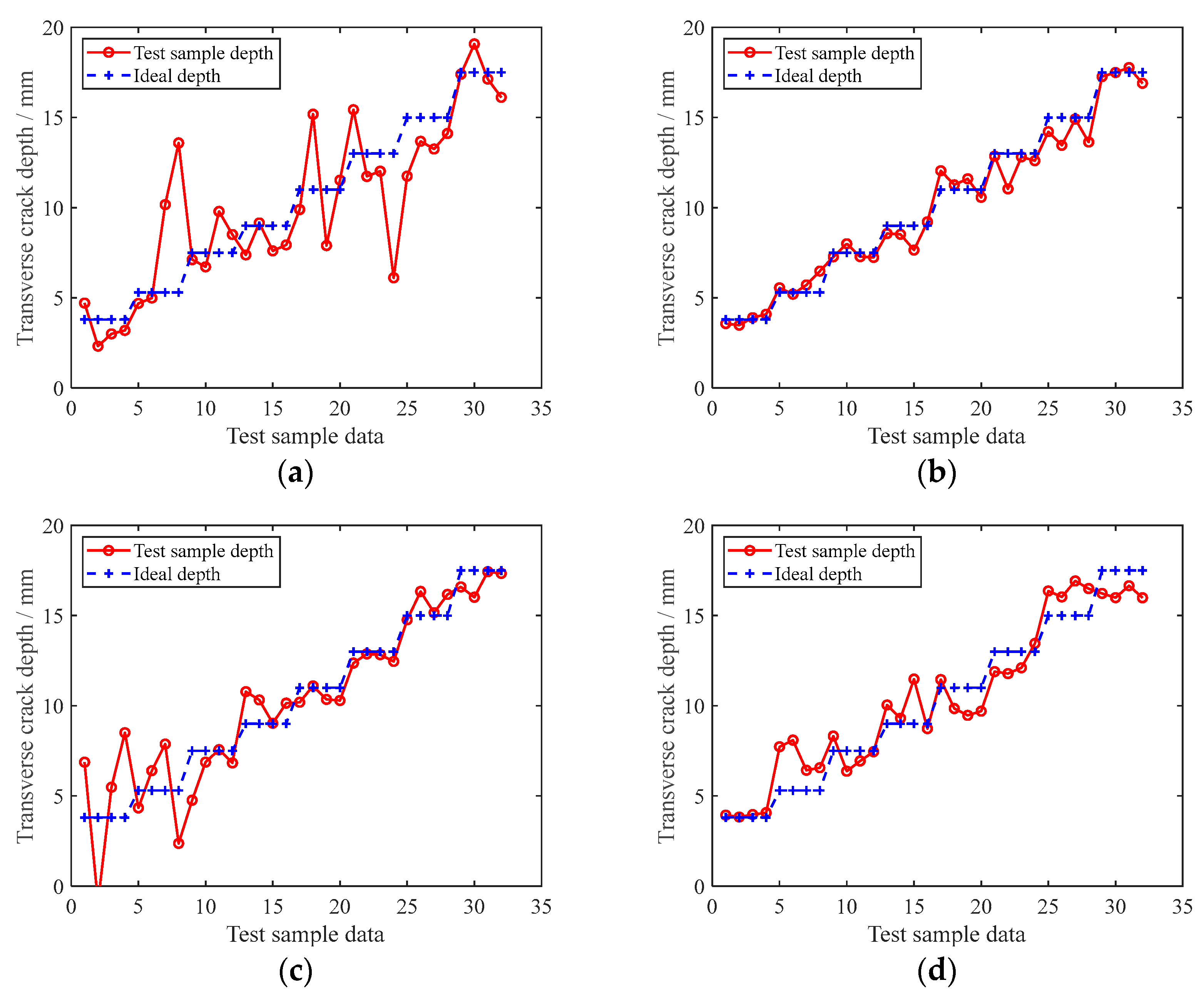
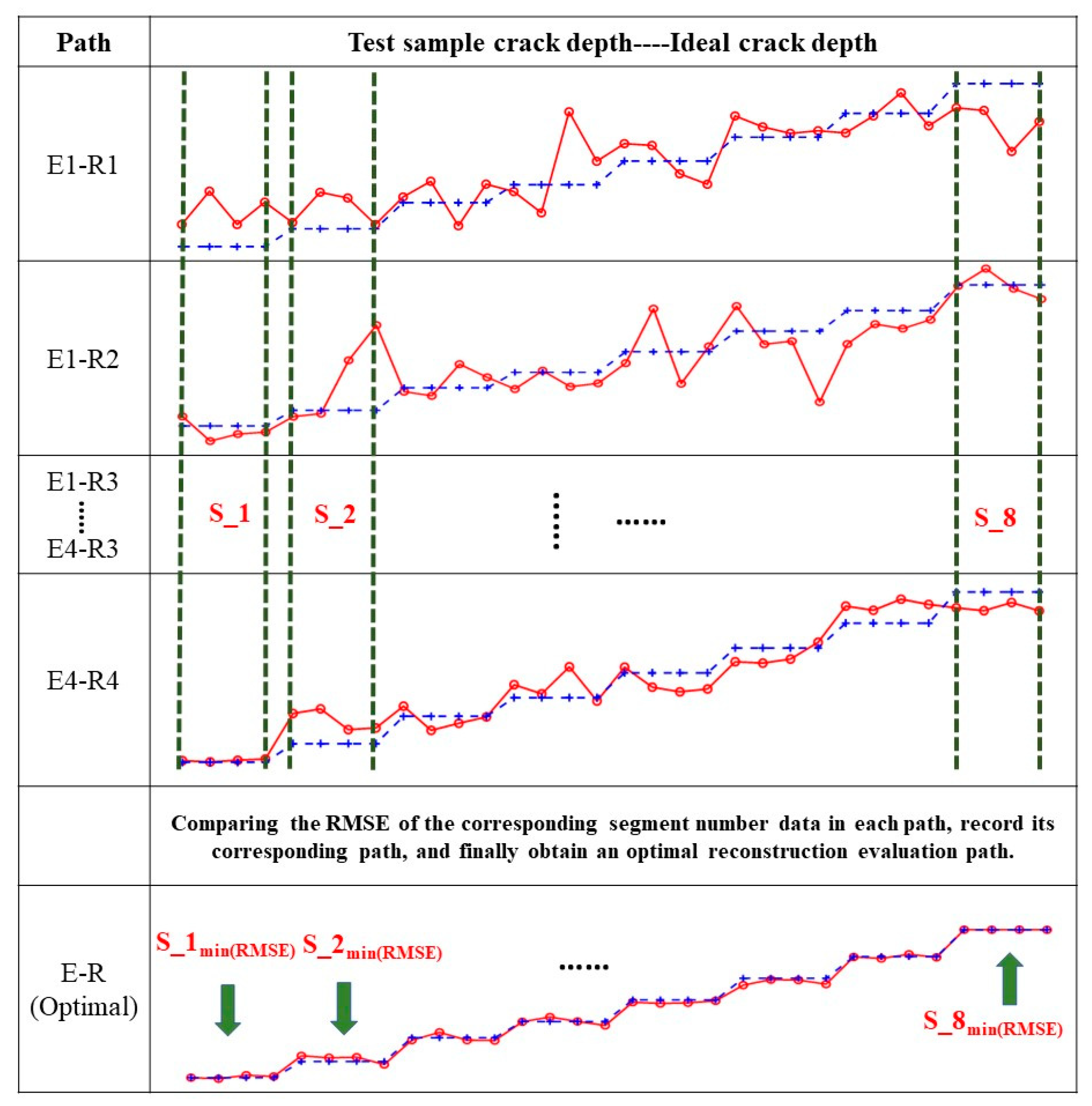
| Rail Type | Elastic Modulus (Pa) | Poisson’s Ratio (α) | Density (kg/m3) | Grid Length (m) | Excitation Signal Frequency (kHz) |
|---|---|---|---|---|---|
| CHN60 | 2.1 × 1011 | 0.29 | 7850 | 8.6 × 10-4 | 350 |
| Evaluation Metric | Expression | Parameter Description |
|---|---|---|
| RMSE | is the ideal value, and N is the total amount of data. | |
| is the ideal value. | ||
| P_Rr010 | is the total number of test samples. | |
| P_Rr005 | is the total number of test samples. |
| Dimensional Feature Parameters | Dimensionless Feature Parameters | ||
|---|---|---|---|
| Feature Parameters | Expressions | Feature Parameters | Expressions |
| Maximum value | Kurtosis | ||
| Minimum value | Skewness | ||
| Average value | Waveform factor | ||
| Square root amplitude | Peak factor | ||
| Variance biased | Impulse factor | ||
| Standard deviation | Margin factor | ||
| Root mean square | Clearance factor | ||
| Feature Parameters | Expressions | Feature Parameters | Expressions |
|---|---|---|---|
| Centroid frequency | Root mean square frequency | ||
| Mean frequency | Root variance frequency |
| Path | RMSE | R2 | P_Rr010 | P_Rr005 | Path | RMSE | R2 | P_Rr010 | P_Rr005 |
|---|---|---|---|---|---|---|---|---|---|
| E1-R1 | 2.2233 | 0.7529 | 37.50% | 15.63% | E3-R1 | 1.5075 | 0.8855 | 37.50% | 18.75% |
| E1-R2 | 1.4772 | 0.9015 | 53.13% | 40.63% | E3-R2 | 1.8944 | 0.8199 | 34.38% | 25.00% |
| E1-R3 | 1.9551 | 0.8091 | 53.13% | 28.13% | E3-R3 | 0.4755 | 0.9890 | 81.25% | 59.38% |
| E1-R4 | 0.6664 | 0.9782 | 87.50% | 59.38% | E3-R4 | 1.8411 | 0.8307 | 43.75% | 31.25% |
| E2-R1 | 1.4222 | 0.9077 | 43.75% | 15.63% | E4-R1 | 0.8257 | 0.9660 | 78.13% | 37.50% |
| E2-R2 | 1.6733 | 0.8602 | 56.25% | 21.88% | E4-R2 | 1.8289 | 0.8380 | 43.75% | 31.25% |
| E2-R3 | 0.7039 | 0.9751 | 81.25% | 62.50% | E4-R3 | 0.4366 | 0.9910 | 100% | 84.38% |
| E2-R4 | 0.7460 | 0.9735 | 81.38% | 68.75% | E4-R4 | 1.1635 | 0.9326 | 62.50% | 53.13% |
| Path | RMSE | R2 | P_Rr010 | P_Rr005 |
|---|---|---|---|---|
| E-R(optimal) | 0.3762 | 0.9932 | 100% | 87.50% |
Publisher’s Note: MDPI stays neutral with regard to jurisdictional claims in published maps and institutional affiliations. |
© 2022 by the authors. Licensee MDPI, Basel, Switzerland. This article is an open access article distributed under the terms and conditions of the Creative Commons Attribution (CC BY) license (https://creativecommons.org/licenses/by/4.0/).
Share and Cite
Yang, Y.; Wang, P.; Song, T.-L.; Jiang, Y.; Zhou, W.-T.; Xu, W.-L. Evaluation of the Transverse Crack Depth of Rail Bottoms Based on the Ultrasonic Guided Waves of Piezoelectric Sensor Arrays. Sensors 2022, 22, 7023. https://doi.org/10.3390/s22187023
Yang Y, Wang P, Song T-L, Jiang Y, Zhou W-T, Xu W-L. Evaluation of the Transverse Crack Depth of Rail Bottoms Based on the Ultrasonic Guided Waves of Piezoelectric Sensor Arrays. Sensors. 2022; 22(18):7023. https://doi.org/10.3390/s22187023
Chicago/Turabian StyleYang, Yuan, Ping Wang, Tian-Lang Song, Yi Jiang, Wen-Tao Zhou, and Wei-Lei Xu. 2022. "Evaluation of the Transverse Crack Depth of Rail Bottoms Based on the Ultrasonic Guided Waves of Piezoelectric Sensor Arrays" Sensors 22, no. 18: 7023. https://doi.org/10.3390/s22187023





